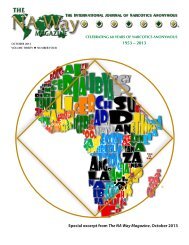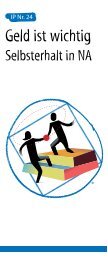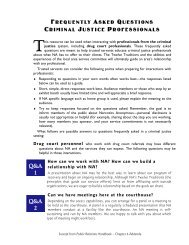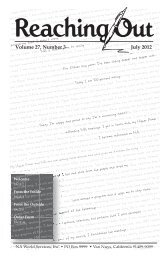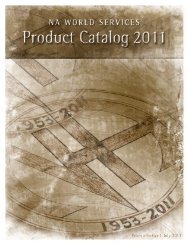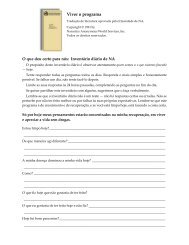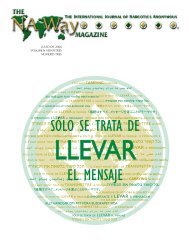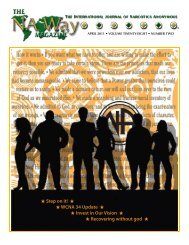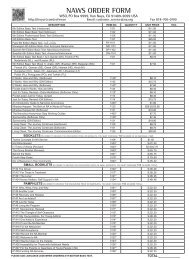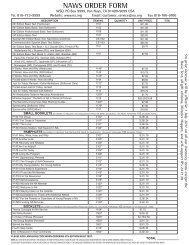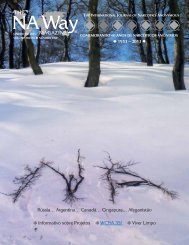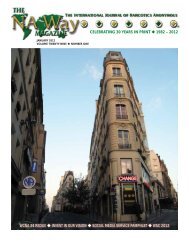Public Relations Handbook - Narcotics Anonymous
Public Relations Handbook - Narcotics Anonymous
Public Relations Handbook - Narcotics Anonymous
You also want an ePaper? Increase the reach of your titles
YUMPU automatically turns print PDFs into web optimized ePapers that Google loves.
on television. A public service announcement, or PSA, can be as simple as atelevision station announcer displaying a card with a local phoneline number and ascript that states, “If you’ve been affected by addiction, you can call this NA phonenumber.” Trusted servants can explore other available broadcast resources to findcreative PR opportunities in their communities. Following are considerations whenundertaking a PSA or public-access project: The area service committee can discuss the best time to air a PSA. An ASC orcommittee can request that a PSA be aired after a documentary about addiction,but it is very uncommon to have any control over when a PSA is aired. Make sure that local members and local groups are aware of the media projectand prepared for a possible influx of helpline phone calls or newcomers at localmeetings. An area may want to contact the region or the World Service Office aboutPSAs for broadcast media. The cost of creating videos can easily overwhelm anarea’s resources (see Chapter Three for information about how to inventoryarea resources and effectively plan projects). The information above can also be applied to PSAs that are used on radio shows.If a committee decides to participate in a radio program about NA, one of themost important considerations is that NA is represented by a group of addicts. Thefollowing points need to be discussed before participating in radio shows: We prepare talking points about the NA program (see the section in ChapterFour, “What We Want to Communicate about NA,” and addendum materialfor examples). We also plan and rehearse what we will say if asked questions that fall outside ofproviding information about the NA program (Chapter Four has resources forinteracting with the public). We are sure to invite NA members who are trained for PR opportunities like aradio interview (see Chapter Four for guidelines about how to train membersfor public relations opportunities). We consider if the panel of membersaccurately reflects the area’s diversity, including both men and women andoffering varying clean time, age, and experience. We are cautious about sensationalizing addiction or sharing the details of ourpersonal story. We can share some details from our personal story for the purposeof identification—but we keep the focus on what NA is and how to find us.Television, video, and film are media venues where long-term planning andthorough consideration are especially important. Broadcast media can be anopportunity to establish long-lasting relationships where NA is seen as a reliablesource of information about recovery from addiction. If broadcast professionals arewell informed about the NA program, they are more likely to use NA as a resource.Looking at the needs of the community and the abilities of the area can help trustedservants avoid broadcast projects that seem exciting but actually have little likelihoodof helping an addict find NA. The points below outline some of the issues connectedwith broadcast venues: Since addicts don’t use full-face images to represent NA, we can rely on nonaddictsupporters if we are asked to participate in a TV interview. If an area has decidedto participate in a TV, video, or film project using a nonaddict, they will want tobe sure that the nonmember is trained and working closely with the area.October 2006 | PR <strong>Handbook</strong> | 45



